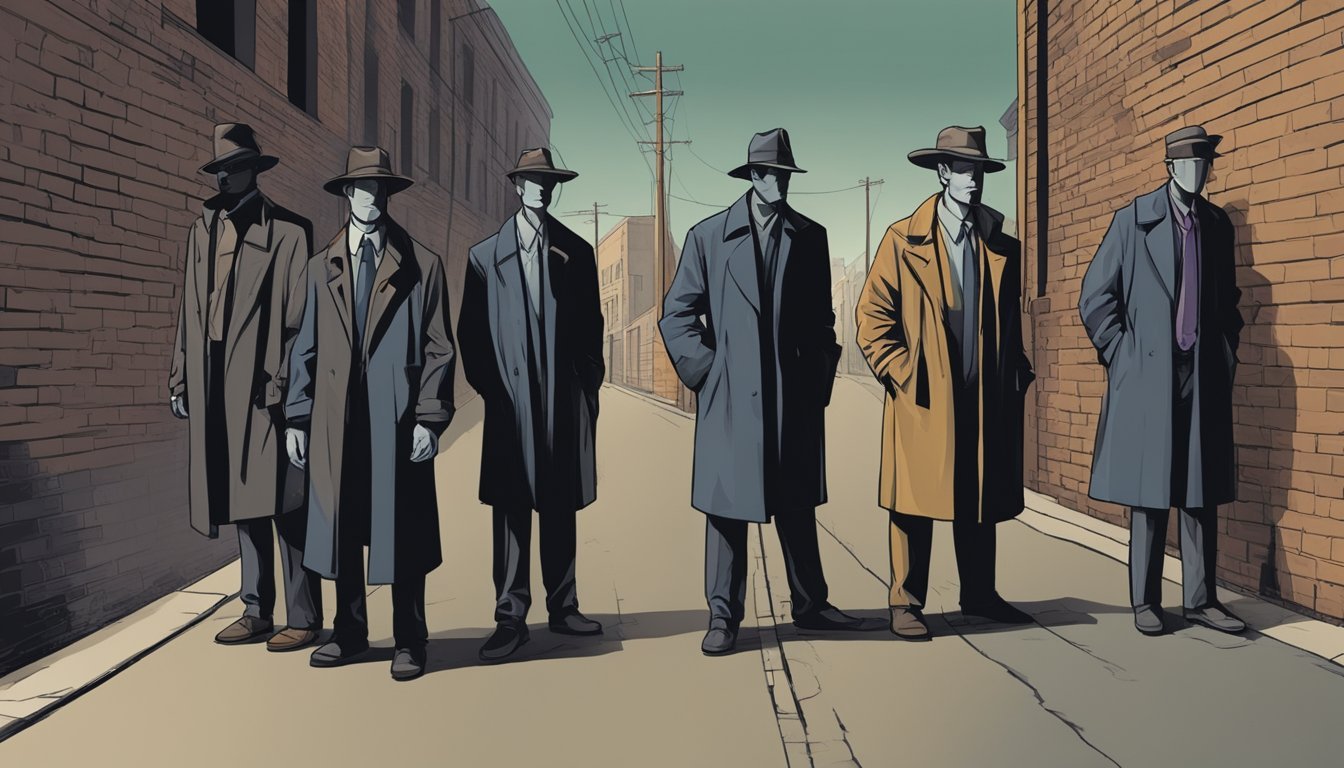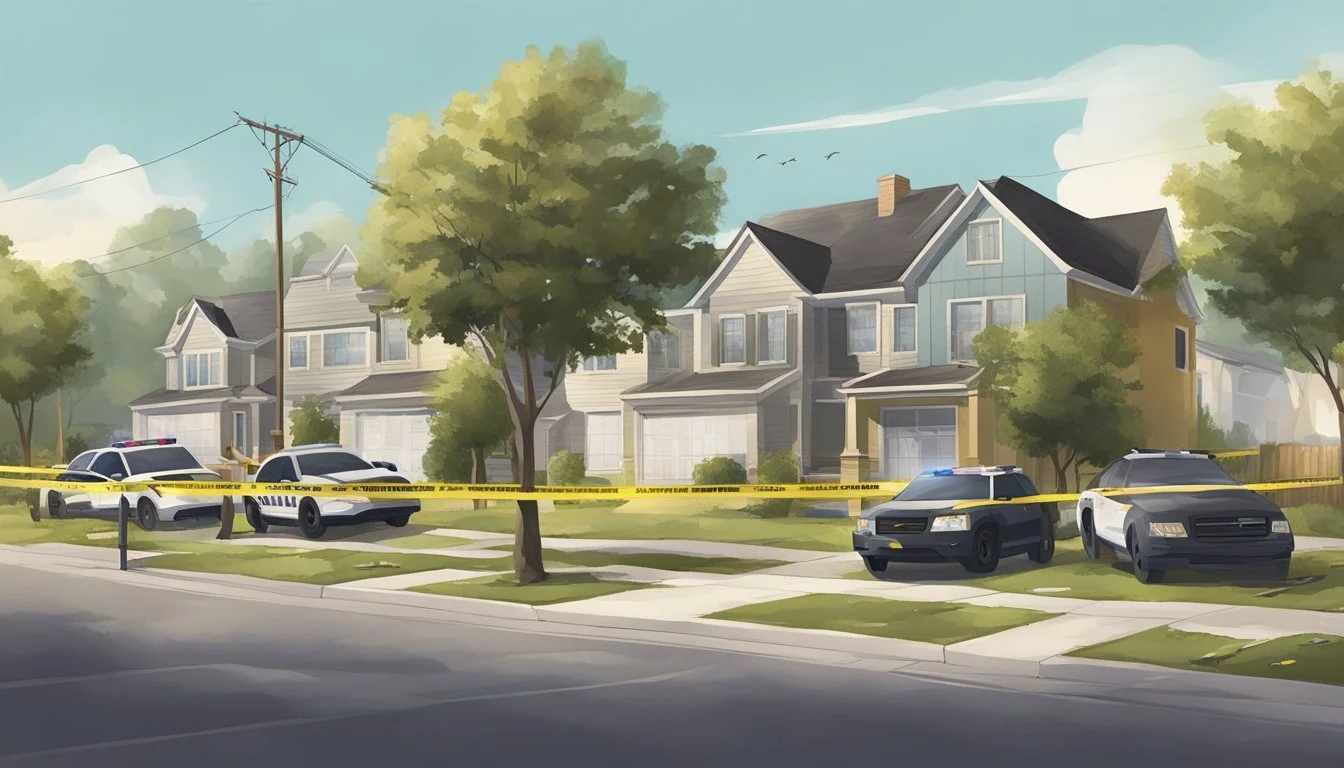Alfred Gaynor: 6 Unsolved Cases Potentially Linked to Springfield's Silent Killer
New Evidence Emerges
Alfred Gaynor, one of Springfield's most notorious serial killers, terrorized the Massachusetts city in the late 1990s. His brutal crimes left a lasting impact on the community and law enforcement. While Gaynor has been convicted of multiple murders, questions remain about other unsolved cases potentially linked to him.
Investigators have identified six additional unsolved homicides that bear similarities to Gaynor's known crimes. These cases, spanning from the mid-1990s to early 2000s, share certain characteristics with Gaynor's confirmed killings. The potential connections have reignited interest in cold cases and raised the possibility that Gaynor's true victim count may be higher than previously thought.
1) Fingerprint Evidence
Fingerprint evidence played a crucial role in connecting Alfred Gaynor to several unsolved cases. Investigators discovered partial prints at multiple crime scenes that matched Gaynor's unique ridge patterns.
These fingerprints were found on various surfaces, including doorknobs, windowsills, and personal belongings of the victims. The distinctive whorls and loops in Gaynor's prints provided a strong link between him and the crime scenes.
Forensic experts meticulously analyzed the recovered prints using advanced comparison techniques. They identified numerous points of similarity between the crime scene prints and Gaynor's known fingerprints on file.
The fingerprint evidence strengthened the prosecution's case against Gaynor. It placed him at the locations where the murders occurred, corroborating other physical evidence and witness testimonies.
While not conclusive on its own, the fingerprint evidence formed a significant part of the overall forensic picture. It helped investigators piece together Gaynor's movements and activities during the period of the killings.
2) Unsolved Murders
Alfred Gaynor's crime spree in Springfield, Massachusetts during the late 1990s left a trail of unsolved cases. While convicted of four murders, Gaynor later confessed to four additional killings.
These confessions shed light on previously unsolved homicides in the area. Law enforcement officials had long suspected Gaynor's involvement in other deaths but lacked sufficient evidence to charge him.
The revelation of these additional murders shocked the community and reopened old wounds for victims' families. It also raised questions about the possibility of more undiscovered victims.
Investigators continue to examine cold cases from that period, searching for potential links to Gaynor. DNA evidence and forensic techniques have advanced since the original investigations, offering new avenues for solving these crimes.
The full extent of Gaynor's actions may never be known. His confessions have provided some closure, but the possibility of other unsolved murders connected to him remains a haunting question for law enforcement and the Springfield community.
3) Potential DNA Matches
Alfred Gaynor's DNA profile has been entered into national databases, allowing for potential matches with unsolved cases. This has opened up new avenues for investigation in cold cases across Massachusetts and beyond.
Investigators have been comparing Gaynor's DNA to evidence from unsolved murders and sexual assaults in Springfield and neighboring areas. Several cases from the 1990s have shown promising similarities to Gaynor's known crimes.
Law enforcement agencies are also exploring the use of forensic genetic genealogy to identify any potential links between Gaynor and other unsolved cases. This technique has proven successful in solving cold cases for other serial offenders.
While no definitive matches have been publicly announced, authorities continue to analyze DNA evidence from open cases. The process is meticulous and time-consuming, but it offers hope for closure to families of victims in unsolved crimes.
As technology advances, the potential for identifying additional victims through DNA matching increases. Investigators remain committed to exploring all possibilities to determine the full extent of Gaynor's crimes.
4) Interview Transcripts
Several interview transcripts from Alfred Gaynor's case have provided valuable insights into his crimes. These documents contain conversations with law enforcement officials, family members of victims, and even Gaynor himself.
One notable transcript features a detective describing Gaynor's demeanor during interrogation. The officer noted Gaynor's calm and collected attitude, which contrasted sharply with the gravity of his alleged crimes.
Another transcript includes testimony from a victim's sister. She recounted her family's anguish and the lasting impact of her sibling's murder on their lives.
Perhaps most chilling are the transcripts of Gaynor's own statements. In these, he detailed his methods and motivations with a disturbing lack of emotion. His matter-of-fact descriptions of violent acts shocked even seasoned investigators.
These interview transcripts have been crucial in understanding Gaynor's psychology and the full extent of his crimes. They continue to be studied by law enforcement and criminal psychologists seeking to prevent similar tragedies in the future.
5) Witness Reports
Several witness accounts emerged during the investigation of Alfred Gaynor's crimes. These reports provided crucial information that helped law enforcement piece together the timeline of events.
Neighbors reported seeing Gaynor entering and leaving victims' residences at odd hours. Some witnesses described a man matching Gaynor's description loitering in areas where bodies were later discovered.
A few individuals came forward with accounts of Gaynor's erratic behavior in the days surrounding certain murders. These reports included instances of him appearing agitated or disheveled in public spaces.
Law enforcement also received tips from people who had encountered Gaynor socially. These witnesses described conversations or interactions that, in hindsight, seemed suspicious or concerning.
While many of these reports were circumstantial, they played a vital role in corroborating other evidence. Investigators used this information to establish patterns and build a stronger case against Gaynor.
6) Police Statements
Law enforcement officials have made several statements regarding Alfred Gaynor's potential involvement in unsolved cases. Springfield police detectives have expressed interest in revisiting cold cases from the mid-1990s that align with Gaynor's known pattern of crimes.
Investigators have noted similarities between Gaynor's confirmed victims and some unsolved murders in the area. These include the targeting of vulnerable women and specific methods of assault.
Police spokespeople have emphasized the importance of thorough investigation before drawing conclusions. They have stated that while Gaynor is a person of interest in some open cases, definitive evidence is still needed to link him conclusively.
Detectives have also mentioned the challenges of investigating decades-old crimes. Limited physical evidence and fading memories of potential witnesses complicate efforts to solve these cases.
Law enforcement has called for anyone with information about unsolved murders from the 1990s to come forward. They believe public assistance could be crucial in determining if Gaynor was responsible for additional crimes.
Background on Alfred Gaynor
Alfred J. Gaynor committed a series of brutal murders in Springfield, Massachusetts from 1995 to 1998. His crimes shocked the community and led to multiple life sentences without parole.
Early Life and Criminal History
Born on December 10, 1966, Alfred Gaynor grew up in Springfield, Massachusetts. Little is known about his childhood or early adulthood.
Gaynor worked as a handyman before his arrest. He had prior convictions for breaking and entering, as well as drug possession.
His criminal activities escalated dramatically in the mid-1990s. Between 1995 and 1998, Gaynor murdered at least eight women in Springfield.
Connection to Springfield
Springfield was the focal point of Gaynor's crimes. He targeted vulnerable women in the city, often those struggling with addiction.
Gaynor's local knowledge allowed him to operate undetected for years. He preyed on victims in areas known for drug activity and prostitution.
His crimes deeply impacted Springfield's community. The murders created fear and uncertainty until Gaynor's arrest in 1998.
After his conviction, Gaynor remained incarcerated in Massachusetts. He is currently held at the Souza-Baranowski Correctional Center in Lancaster.
Investigation Details
Alfred Gaynor's case involved extensive forensic evidence and a multi-agency effort to apprehend him. Investigators meticulously pieced together clues from multiple crime scenes to build their case.
Suspicion and Evidence
DNA evidence played a crucial role in linking Gaynor to several murders. Investigators found his genetic material at multiple crime scenes. This forensic evidence included blood, semen, and skin cells.
Physical evidence like fingerprints also tied Gaynor to the victims. Detectives discovered items belonging to the murdered women in his possession.
Witness statements provided additional leads. Some individuals reported seeing Gaynor with victims shortly before their disappearances.
Police and FBI Involvement
Local Springfield police worked closely with Massachusetts State Police on the case. The FBI joined the investigation due to the serial nature of the crimes.
Task forces were formed to coordinate efforts across agencies. These teams shared information and resources to track down leads.
Profilers from the FBI's Behavioral Analysis Unit assisted in developing a psychological profile of the killer. This profile helped narrow down potential suspects.
Forensic experts from multiple agencies analyzed evidence from the crime scenes. Their work was crucial in building a solid case against Gaynor.
Impact on the Community
Alfred Gaynor's crimes deeply affected Springfield, Massachusetts. Residents experienced heightened fear and anxiety, while support groups emerged to assist victims' families and raise awareness about safety issues.
Public Reaction and Fear
Gaynor's killing spree created widespread panic in Springfield. Many residents felt unsafe in their own homes and neighborhoods. Women, particularly those in vulnerable situations, became more cautious about their daily activities.
Local businesses saw a decline in foot traffic, especially after dark. The community organized neighborhood watch programs and self-defense classes. Springfield police increased patrols and urged residents to report suspicious activities.
Media coverage of the murders intensified public concern. Some criticized law enforcement for not catching Gaynor sooner, leading to tensions between police and certain community groups.
Advocacy and Support Groups
In response to Gaynor's crimes, several advocacy organizations formed in Springfield. These groups provided counseling services to victims' families and raised awareness about violence against women.
One prominent organization, "Springfield Safe Streets," lobbied for improved street lighting and security cameras in high-risk areas. They also conducted workshops on personal safety and worked closely with local law enforcement.
Victims' families created support networks to cope with their losses. These groups organized vigils, memorial services, and fundraisers to honor the victims and support their loved ones.
Some advocates used Gaynor's case to highlight systemic issues in the criminal justice system. They pushed for reforms in how violent crimes are investigated and prosecuted, aiming to prevent similar tragedies in the future.







